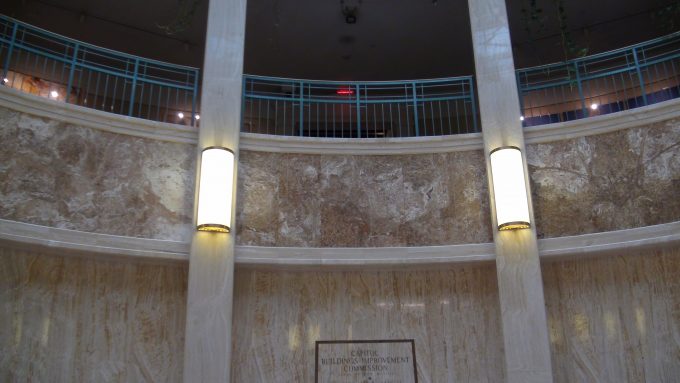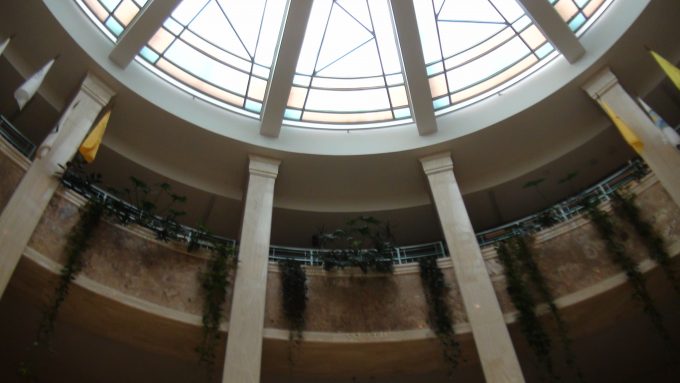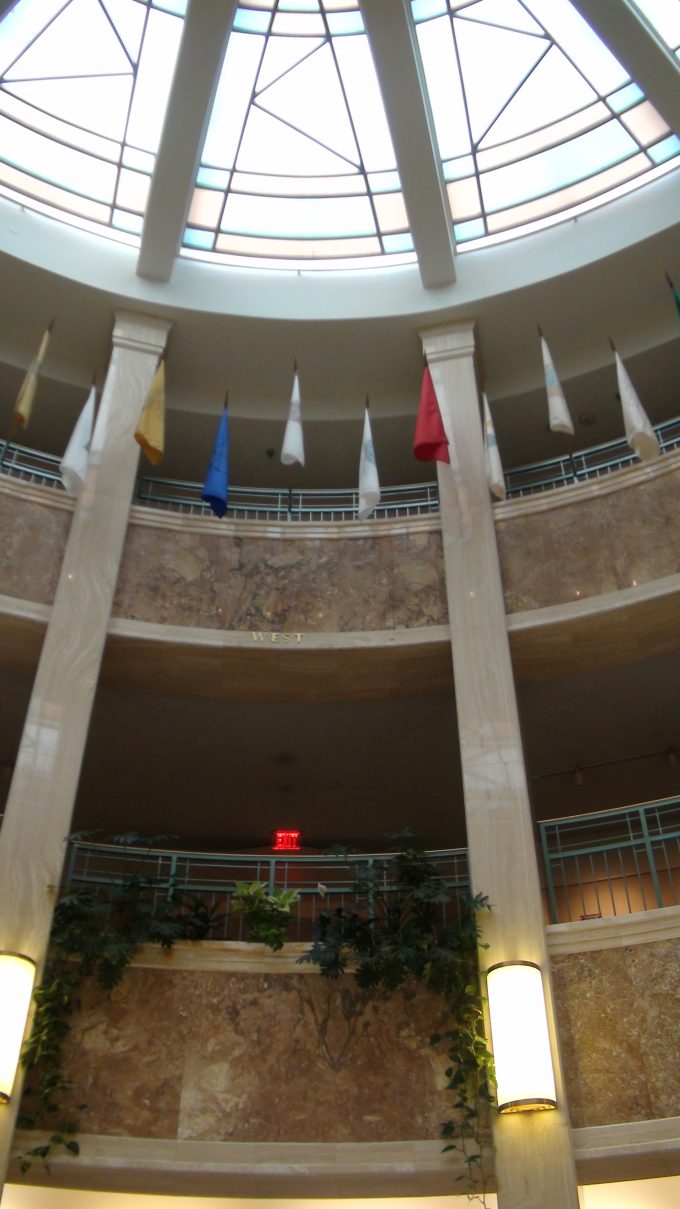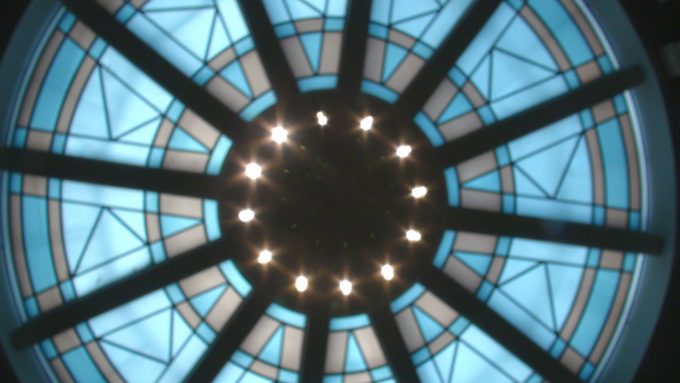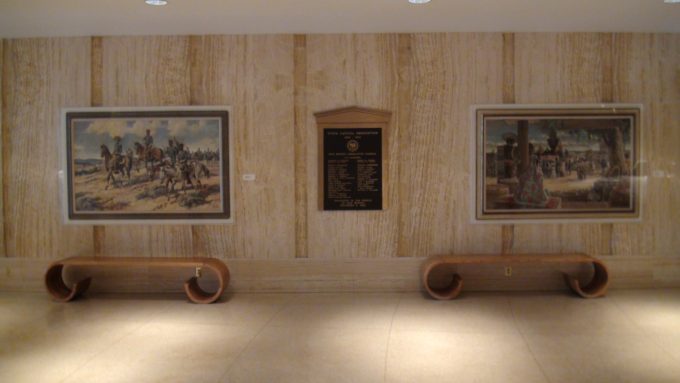
Monday, 31 December 2018
But Christ came as High Priest of the good things to come, with the greater and more perfect tabernacle not made with hands, that is, not of this creation. Hebrews 9:11
The author now contrasts the earthly sanctuary that he has been describing – meaning its makeup, rituals, offerings, and services – with that of Christ’s. This is evident with the conjunction de, translated here as, “But.” In this contrast, he says, “But Christ.”
In this, we have the contrast between the high priest of Israel under the Old Covenant, meaning Aaron and his sons after him, and Jesus, the “Mediator of a better covenant, which was established on better promises” (Hebrews 8:6). He, not Aaron, “came as High Priest of the good things to come.” A point of correction: “Of good things to come” is wrong. It is “of good things having come.” One might say, “of the good things realized.” As Vincent’s Word Studies says, it speaks of “Blessings not merely prophetic or objects of hope, but actually attained; free approach to God, the better covenant, personal communion with God, the purging of the conscience.”
Despite the translation, the obvious meaning of this is that what came under the Old Covenant was not “good” in comparison to what has come in Christ. Paul says in Romans 7:12 that “the law is holy, and the commandment holy and just and good.” But Paul continues with the words, “Has then what is good become death to me? Certainly not! But sin, that it might appear sin, was producing death in me through what is good, so that sin through the commandment might become exceedingly sinful.”
Now in Hebrews, the author is here making a contrast between the law and the grace found in Christ. The commandment is good, but its outcome – because of sin in man – is not. In Christ though, the outcome far outshines what the law could produce. The law brought death; Christ brings life. The law highlighted sin; Christ removes sin (see Hebrews 10:1). The law demanded a penalty; Christ grants grace and mercy. Such “good things” are not found under the law, but they radiantly shine forth in the New Covenant.
And, along with these great outcomes, the author says that Christ came “with the greater and more perfect tabernacle not made with hands.” This is then a contrast to what he has already said about the tabernacle of the first covenant. In Chapter 8, he said, “there are priests who offer the gifts according to the law; 5 who serve the copy and shadow of the heavenly things, as Moses was divinely instructed when he was about to make the tabernacle. For He said, ‘See that you make all things according to the pattern shown you on the mountain’” (Hebrews 8:4, 5).
What Aaron served at was an earthly tabernacle, and only a “copy and shadow” of a greater and more perfect tabernacle. Whereas that of Aaron was made by human hands, that of Christ is heavenly. It was “not made with hands, that is, not of this creation.” This is what Paul speaks of in 2 Corinthians 5:1-5 –
“For we know that if our earthly house, this tent, is destroyed, we have a building from God, a house not made with hands, eternal in the heavens. 2 For in this we groan, earnestly desiring to be clothed with our habitation which is from heaven, 3 if indeed, having been clothed, we shall not be found naked. 4 For we who are in this tent groan, being burdened, not because we want to be unclothed, but further clothed, that mortality may be swallowed up by life. 5 Now He who has prepared us for this very thing is God, who also has given us the Spirit as a guarantee.”
In the fact that what Christ presents is heavenly, we see an undeniable truth. As the sanctuary, the implements in it, the offerings made there, and those who served there – all of it – pointed to Christ, and prefigured Him and His work, and as the author says that all of this is “not of this creation,” then the inescapable truth is that Jesus Christ is not a created being as claimed by cults such as the Jehovah’s Witnesses. Though He united with His creation, He is not created. As He is not created, then He must be the Creator, because only the Creator is not created.
Who Christ is, and what He has done for us in the New Covenant, is not just “better than” anything connected with the Old Covenant. Rather, He is infinitely so. There is no comparison which can truly be made between the two when considering both their makeup and their outcome.
Life application: What God established was good and it met its purposes perfectly, which is that we would realize we can never attain righteousness through the law, the temple, or the temple rituals. Rather, Christ fulfilled the law on our behalf, coming “with the greater and more perfect tabernacle.” Consider the glory of God, His absolute splendor. Now imagine how minuscule we are in comparison to creation. In fact, take 6 minutes to watch this video – http://www.youtube.com/watch?v=17jymDn0W6U
After this, ask yourself the question David asked so long ago, “What is man that you are mindful of him, the son of man that you care for him?” (Psalm 8:4). Imagine the Creator of all of this caring so much for you that He united with human flesh and humbled Himself on a cross… all for you. When you are feeling low, useless, or lacking value, please remember that God feels completely the opposite about you. Through Christ, He has called you His precious child.
Lord God, Your word reveals that we have true value to You, if we will but come to You in faith. You possess all of the power displayed in the universe, and even more. And yet You loved us enough that You sent Jesus to die for our sins so that we could be restored to You once again. Surely we have value to You, if we will but come to You in faith. Help us to do so, O God. Amen.

